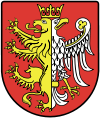Krosno - rynek i okolica (Market Square and background of Krosno)
Tomasz Pelczar
- Uwaga kierowcy! W środę (13.04) utrudnienia w ruchu drogowym w obrębie...
- Usługi opiekuńcze, sąsiedzkie usługi opiekuńcze oraz teleopieka - kontynuacja...
- IX Targi Pracy KPU w Krośnie
- Webinarium „Wsparcie przedsiębiorstw w przygotowaniu do udziału w programach...
- Terapeutyczny efekt wiosennych porządków – nie takie sprzątanie straszne,...
- Wycieczka do Muzeum Lizaka.
- Dzień Rodziców
- Zebranie wiejskie w Lubatowej
- XX Jubileuszowy Ogólnopolski Turniej Ringo
- Zawody Koła Wędkarskiego "Jętka"

- Spółdzielnia Kółek Rolniczych
- Skoda Auto Robert Miś
- Starostwo Powiatowe - Biuro Obsługi Rady
- "Społem" PSS - BHP, Transport, Inwentaryzacja
- Stacja Obsługi Samochodów i Ośrodek Rzeczoznawstwa FH "Margo"
- "Specmed" Sp. z o.o. NZOZ. Zespół Przychodni i Poradni Specjalistycznych
- "Społem" PSS - Dział Finansowo-Księgowy
- "Skrzat" PW. Sieniawski Stefan
- Sojusz Lewicy Demokratycznej. Rada Powiatowa
- Sklep ze Sprzętem AGD "Art-Dom" Guzik Franciszek
- "Solidarność" NSZZ Zarząd Regionu Podkarpacie
- Sklep Zielarsko-Medyczny

 |
Powiat krośnieński - powiat w południowo – zachodniej części województwa podkarpackiego z siedzibą w Krośnie. W skład powiatu wchodzą gminy: Chorkówka, Dukla, Iwonicz- Zdrój, Jaśliska, Jedlicze, Korczyna, Krościenko Wyżne, Rymanów, Miejsce Piastowe i Wojaszówka, zajmując powierzchnię 923,79 km kw. |



